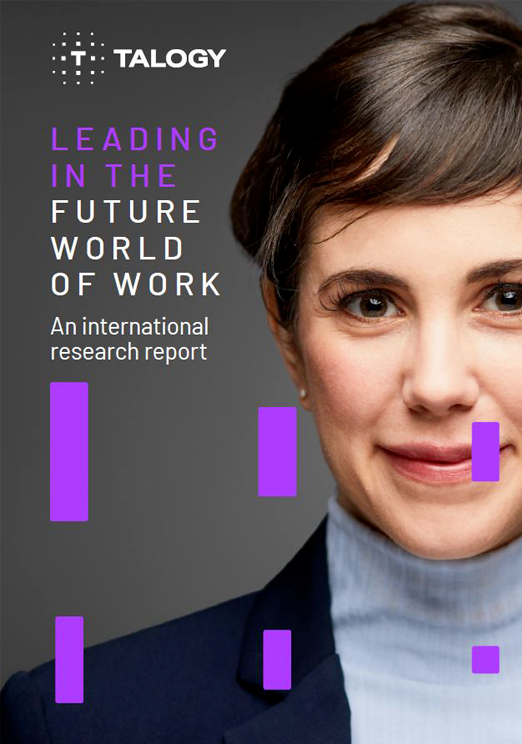Question: Would you rather make an important decision with more information or less information?
That’s rhetorical, of course. We all want more information. It gives us greater confidence in our choices and increases our sense of control. No one goes to a supermarket and asks the shelf stocker to black out the nutrition label with a Sharpie, do they, or visits a car dealership and insists the vehicle window stickers be removed before shopping.
And surely no one would hire a job candidate without first evaluating the prospective employee’s motivations, behavioral tendencies, and performance drivers. Imagine handing salary and benefits to people without knowing if they’re wired to do the job!
Alas, many companies do overlook that essential information. Or, rather, they willingly pass on it and prefer to gamble their time, money, and resources. Managers are expected to make hiring decisions based on paltry data, knowing full well that the person they meet in the interview is putting on a show of best behavior and saying all the right things. That’s the fundamental rationale for using pre-employment assessments in the hiring process: More information about the applicant is better than less information.
The real decision is not, “Should I use a pre-employment assessment,” but, “Which Pre-employment assessment should I use?” The best option is one that has been rigorously researched and tested, is EEOC compliant, and offers versatility, such as the Caliper Profile. People often think of a pre-employment assessment as an applicant screener, but the tool can provide so much more value when fully integrated into the process. Here are three big advantages of using assessments for hiring:
- Selection
The primary function of an assessment is to identify the most viable candidates. To use a simple example, say you have three candidates for a Territory Sales role. Naturally, you want to find the applicant who displays the strongest capacity for generating leads, networking, closing, and operating autonomously in the field. The assessment results will show you which candidates are hard-wired to function in such an arena and which ones are merely talking a good game. It takes a lot more than personal charm to be an effective salesperson! Otherwise, there would be no such thing as turnover; with sure knowledge of forthcoming revenue, we’d simply hire the slickest talker.
Meanwhile, other roles require different motivators and behaviors. Production Supervisors, Accountants, Call-Center Representatives, Software Designers, and Event Planners are just a few examples of positions that call for specific and distinct blends of personality attributes. It can be overwhelming to figure out who among all your candidates is right for each position you need to fill. A pre-employment assessment, when applied systematically, sorts it all out for you.
Companies that use assessments systematically are also able to add consistency to their hiring process, eliminate personal biases among their hiring managers, and begin building a data pool for Analytics use.
- Interviewing
Applicants are rarely perfect. Even those whose behavioral tendencies line up well with the key success factors of the job may have a few question marks in their assessment results. Other times, you might not be able to find the ideal candidate and instead have to choose from several applicants with different blends of motivators and inhibitors.
In either case, you’ll want to ask targeted interview questions to find out if applicants have been able to compensate for their limitations in the past and how they would handle the challenges of the role going forward. The assessment results will help you focus your questions by highlighting concern areas.
Remember that Territory Sales example above? What if the applicant displays the requisite presentation skills, persistence, and autonomy but shows potential to fall short in relationship building or problem solving? Based on what the assessment reveals, you’ll know the potential issues to drill down on in the follow-up interview. Satisfactory responses will give you peace of mind because you know that the applicant has learned to compensate, or you can at least start formulating a coaching plan. Unsatisfactory responses also give you peace of mind because you avoid hiring the wrong person.
- Competency Modeling
Now imagine you have a hundred Territory Sales reps across multiple regions, or dispersed throughout multiple branch locations. As is often the case, some of these reps will be strong performers, and others will struggle. It’s easy to chalk off underperformance as “the cost of doing business,” but it is possible to build a more productive sales force. The best way is through competency modeling.
Your top performers are tops for a reason: they have the right blend of motivators for sales success in your organization. By using assessments to collect personality data from the sales team (including all performance quartiles), you can begin to reveal the differentiators that set your best reps apart. These differentiators are the groundwork for a success model based on the behavioral competencies of top performers. Important: This process has to be done scientifically with statistical analysis; it’s not guesswork.
If you work for a smaller organization, you might be thinking, “Wait a second. I don’t have the resources for a customized competency model.”
Well, we have good news: Caliper has already built a library of sales competency models for different types of sales roles. While many assessment tools profess to measure personality traits, the Caliper Profile is designed to link personality traits to proven job-performance criteria. In other words, we know which traits are drivers of success in transactional sales vs. consultative sales vs. technical sales and so on. We have a model that fits your industry and selling environment.
Selection, interviewing, and job models are not the only ways that an assessment like the Caliper Profile can improve hiring results. It can also be an integral tool for onboarding new hires and setting them up for success, but that’s another story for another day.

